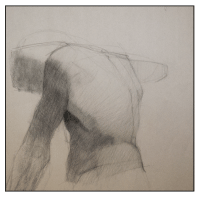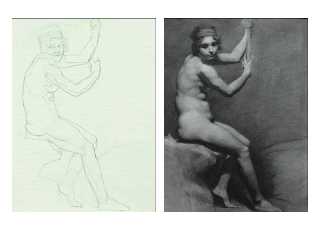This time around, I thought I'd demonstrate how to draw the head by building up to the features from basic shapes and forms in a step-by-step approach.
The method I demonstrate below is a combination of techniques I have learned over the years. These are fairly universal techniques that can be found in many resources and are taught at most schools that offer foundational art instruction.
Here, I want to show how to construct the head as we draw rather than just mimicking the features that we see. This will give us a better understanding of the forms of the head and face and allow us to make up the head in different positions without requiring us to look at a reference every time we need to draw the head.
Let's begin.
















